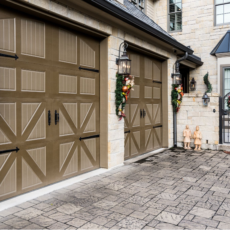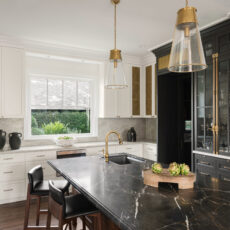Our Houston Interior Designers Share Tips for Creating Your Forever Home
Aging is a fact of life, and we are all lucky to go on the journey through our golden years! But how does aging affect your forever home design plans? Designing a home for aging in place looks ahead to anticipate the physical and mental changes that come with growing older.
While there may not be any ways to prevent aging yet (call us when they find the fountain of youth!), we can take preemptive steps to start changing the things around us, including our homes, to make aging easier. At Pamela Hope Designs, we believe your forever home should include thoughtful design choices to create a safe, comfortable, and functional environment that will serve you well into the future.
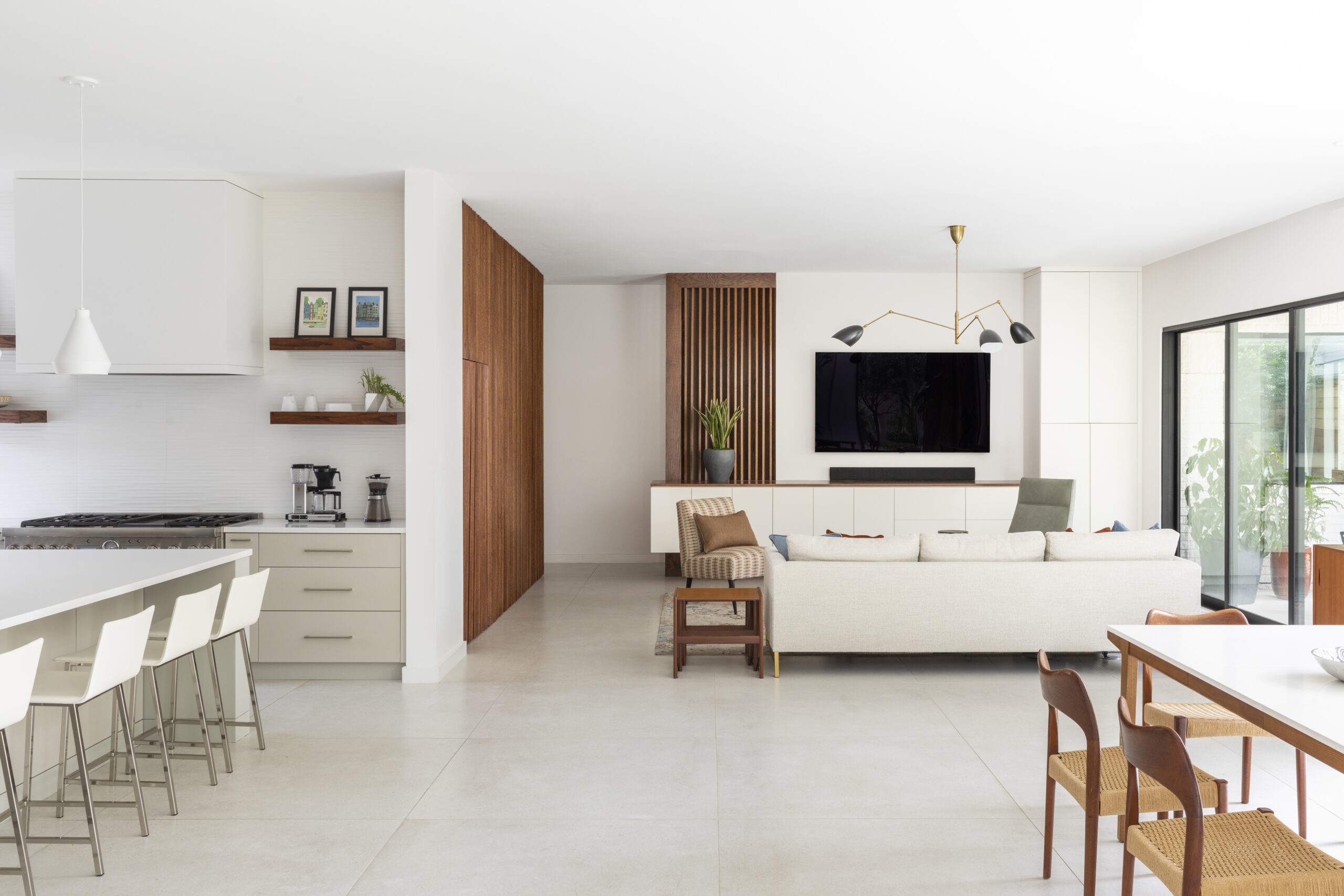
Our Houston interior designers are researching considerations, design principles, and practical tips for creating an age-friendly home. We hope you find plenty of value in this blog for yourself or someone else in your life!
What is Aging in Place?
Aging in place is rooted in the desire for older adults to maintain their autonomy and quality of life without needing to move to assisted living facilities or nursing homes. In our American society, it isn’t as common for families to stay together and care for their elders. Because of that, a large percentage of America’s elderly end up moving into a retirement home or nursing home to receive the proper, and sometimes very high-touch, care that they need.
We’re sure that many of you know what we’re talking about when we say that many homes aren’t suitable for older adults. Typically, the first thing to start wearing on a resident who is aging is the stairs. How many sets of stairs does your elderly grandma or parent have to navigate every day simply to accomplish their everyday needs? Once these types of hazards start to impede the lives of elderly residents, a natural push toward a nursing home begins to take place. For many, this is a very scary and somber part of aging.
The desire to live out one’s final years at home, or maybe even in a new, downsized, less hazardous home, is extremely valid. To achieve this, homes must be designed or adapted to meet the resident’s changing needs. This includes addressing physical challenges and cognitive changes and ensuring the home environment supports daily activities.
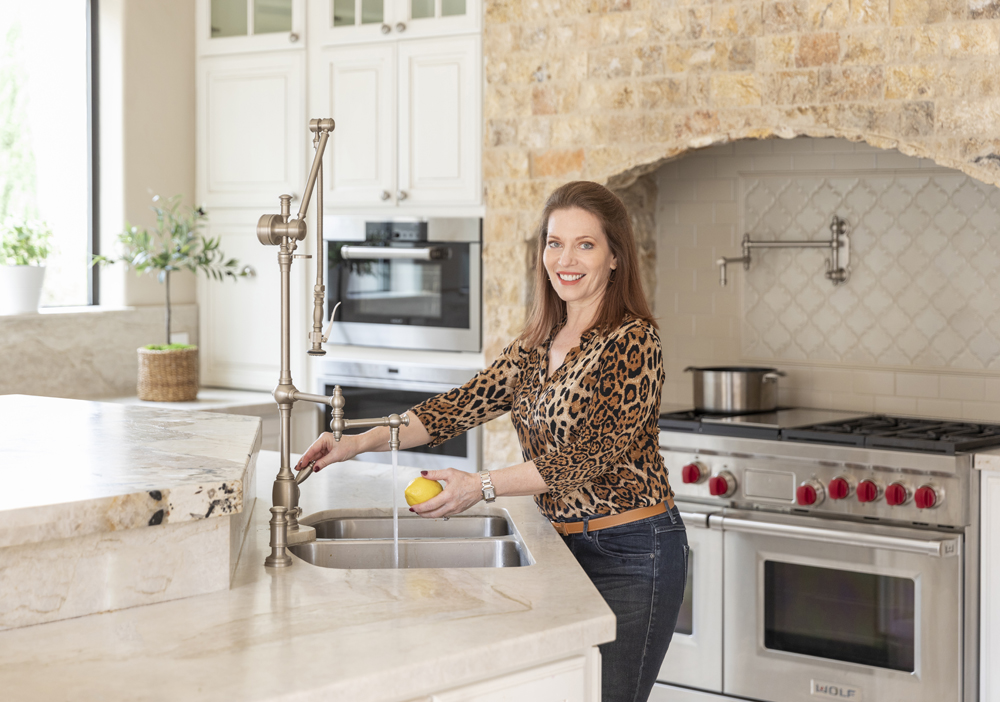
Pamela O’Brien of Pamela Hope Designs
5 Key Design Principles for Aging in Place
Designing a home that is functional for aging in place requires a focus on several fundamental principles. In these scenarios, we like to design for safety, accessibility, comfort, independence, and adaptability.
Safety
Safety is paramount. The home should be free of hazards that could lead to falls, injuries, or other accidents. This involves thoughtful furniture placement, handrail installation, and elimination of tripping hazards.
Accessibility
Accessibility ensures that all areas of the home are easily reachable and usable by individuals with varying levels of mobility. This includes wider doorways, ramps instead of stairs, barrier-free showers, and single-story home designs or elevators for multi-level properties.
Comfort
Comfort is another crucial factor to consider when designing a home for people who are aging in place. The environment should be welcoming, allowing residents to relax and enjoy their surroundings. Comfortable furniture, appropriate lighting, and climate control are essential in creating a cozy living space.
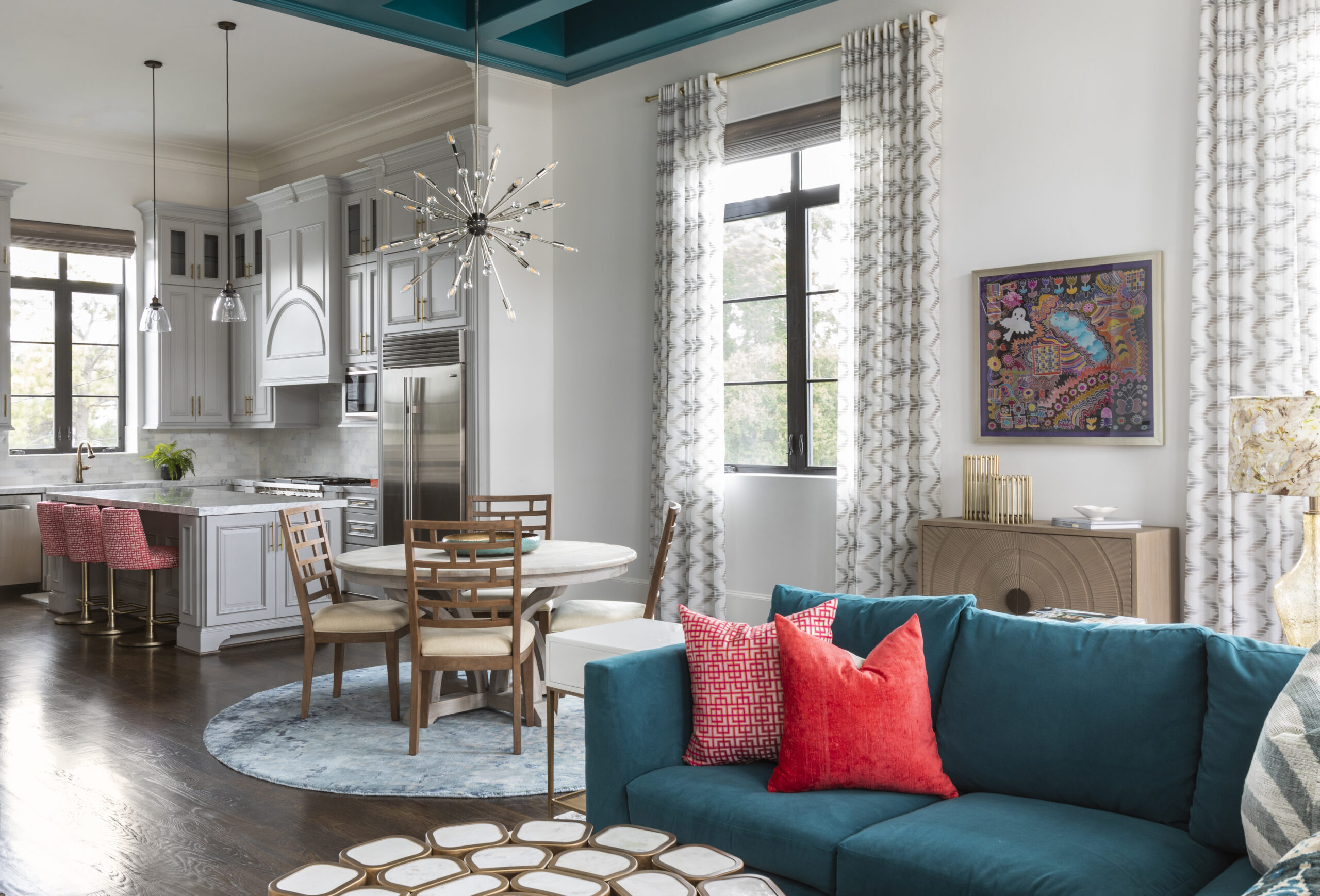
Independence
Independence should be supported by incorporating features like grab bars, lever handles, and adjustable countertops. These features enable residents to perform daily tasks despite changing mobility. The point of aging in place is to live independently without extra care as time progresses, and the home and its functions should support that.
Adaptability
Lastly, adaptability is essential as needs change over time. Homes should be designed to accommodate these changes through adjustable features or flexible spaces that can serve multiple purposes.
How to Create an Accessible Home for Aging in Place
Each room in the home has specific needs when it comes to aging in place.
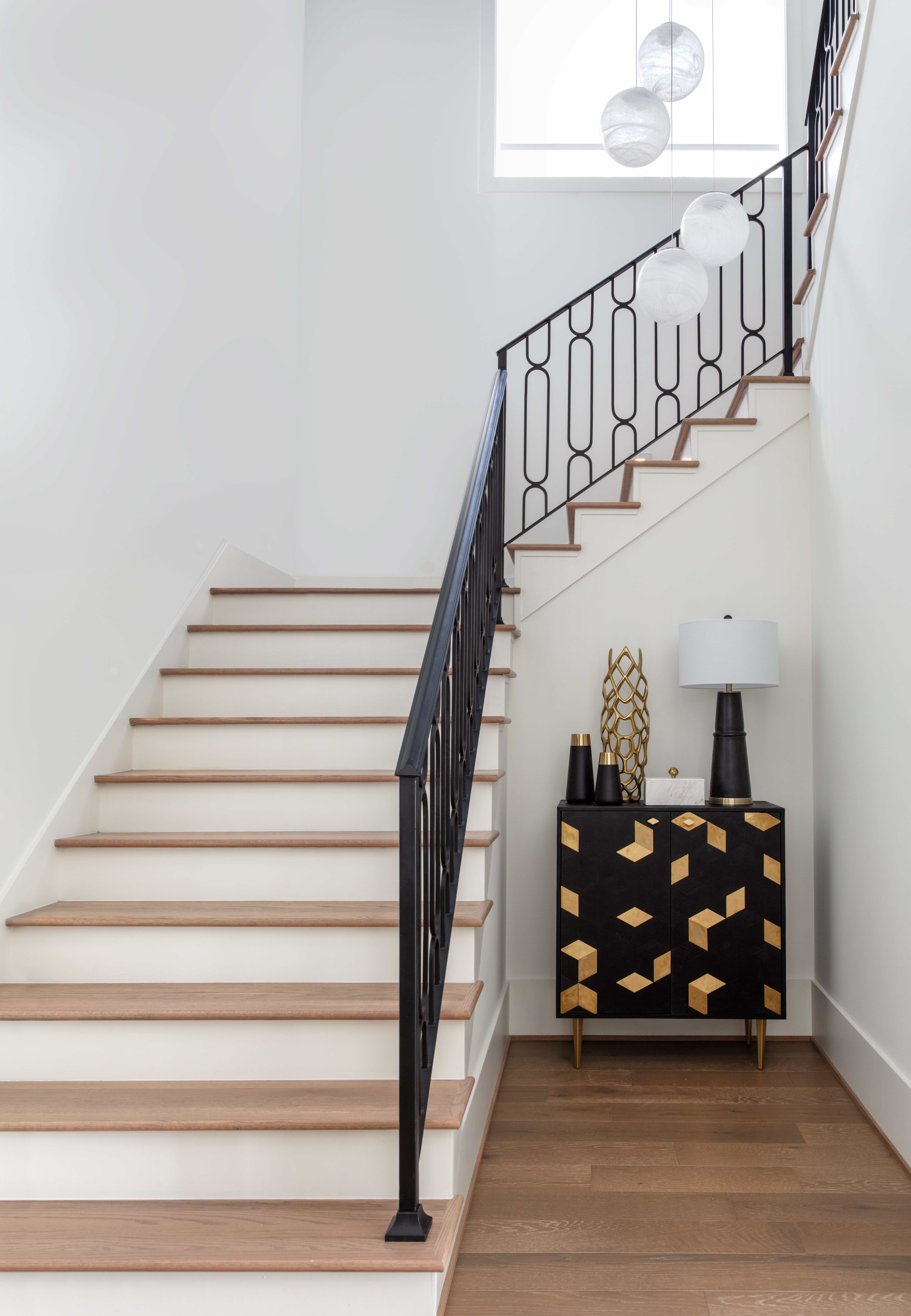
Entryways, Exits, and Doorways
Let’s start with the entryways and exits. We don’t want our elderly residents to have to watch their steps when they enter and exit their homes. Step-free entry allows easy access, especially for wheelchairs or walkers. If steps are unavoidable due to the home’s construction, consider installing a ramp with a gentle slope and non-slip surfaces. And remember, a sturdy handrail can be beautiful as well as functional.
Doorways should be wide enough to accommodate wheelchairs and traditional door knobs should be replaced with lever handles, which are easier to operate for individuals with arthritis or limited hand strength. There are so many minor details to consider when designing for aging in place. Still, it’s crucial to think about each function and each step in the lives of our residents to allow them to age in place comfortably and safely.
Lighting
Think about the different types of lighting in the home and the ease of adjusting the lighting. Adequate lighting, particularly motion-sensor lighting around entryways and exits, can prevent accidents during evening or nighttime hours. Lighting should be ample, ideally with options for adjusting brightness. Task lighting should also be considered for reading areas where applicable. A new favorite practice is subtly washing the stair treads with small lights. Not only is this attractive, it ‘s an excellent safety feature.
Another way to add immense comfort and accessibility is by integrating smart home technology. This can help easily control lighting, temperature, and entertainment systems, further enhancing comfort and safety.
Living Room
The best types of living rooms for these scenarios are the ones with open layouts and minimal unnecessary obstacles. This allows for easy movement and ample space for wheelchairs or walkers while accommodating social needs. Non-slip flooring materials, like hardwood, vinyl, or low-pile carpet, are great to have in place to prevent falls. The living room furniture should have firm cushions so that it’s easier for the resident to sit down and stand up. Yes, the plush cushions may be more comfortable for some, but that can hinder the ability to effectively stay mobile in the home.
Kitchen
In the kitchen, adjustable or varying counter heights can accommodate different needs. Pull-out shelves and drawers in cabinets can reduce the need for bending and reaching, which can help prevent any unnecessary injury. Single-handle lever faucets are easier to operate than traditional twist handles, and non-slip mats near the sink and stove can prevent accidents. Good lighting is extremely important for visibility and safety, particularly over workspaces like the sink, stove, and countertops.
Appliances should be placed at a height that doesn’t require excessive bending or reaching. Wall ovens at waist height, side-by-side refrigerators, and front-loading dishwashers are beneficial.
Bathrooms
The bathroom is one of the most important rooms to modify for safety and accessibility. Outside of the common staircase fall, many falls and injuries occur in the bathroom. A walk-in or roll-in shower with a bench seat and hand-held shower head can make bathing more accessible and safer. Grab bars should be placed near the toilet and in the shower for support, and a raised toilet seat can make it easier to sit down and stand up. You can now order grab bars to match the finish and style of your plumbing to avoid an institutional look. Most of our clients over 50 install grab bars or at least block out places in the walls for future installations. Non-slip tiles or mats should be used to prevent falls, and lever handles on faucets and doors are preferable for ease of use. Bright, even lighting is essential, especially around the mirror and sink.
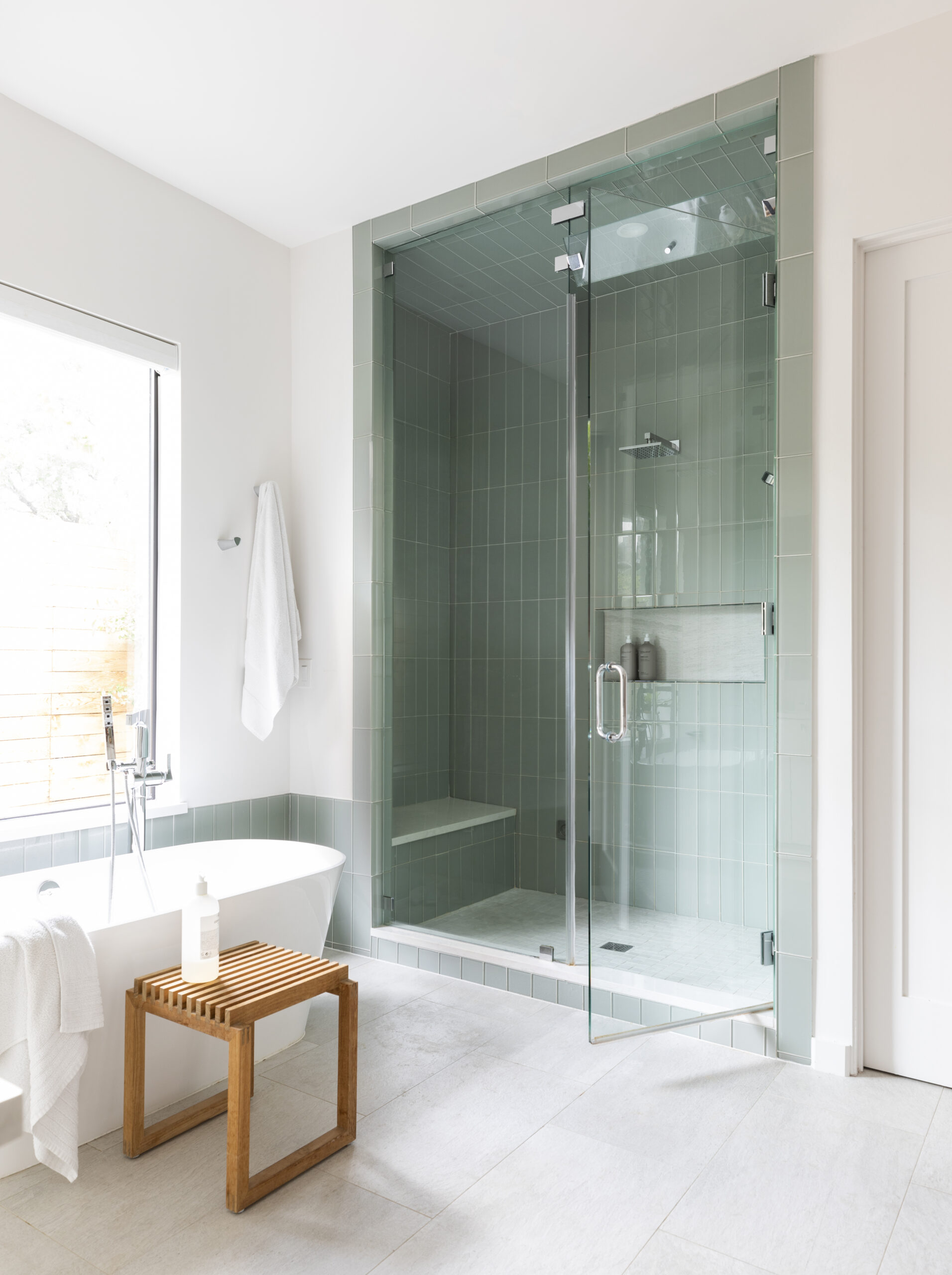
Bedroom
The bedroom should be a serene and safe space with easy access to all of the necessities. The bed should be at a height that allows easy entry and exit. If the resident has a wheelchair, the bed should be at a height that accommodates that transfer. Closets should have low-hanging rods, pull-out shelves, and easy-to-reach drawers to enhance accessibility.
We also like to make sure that nightstands are within reach and stocked with the essentials. These essentials might include a phone, a lamp, a book, and medications. We highly recommend installing motion-sensor nightlights to illuminate the path to the bathroom. This will significantly reduce the risk of nighttime falls and accidents. Soft, low-pile carpeting can provide comfort and warmth while also reducing the risk of tripping.
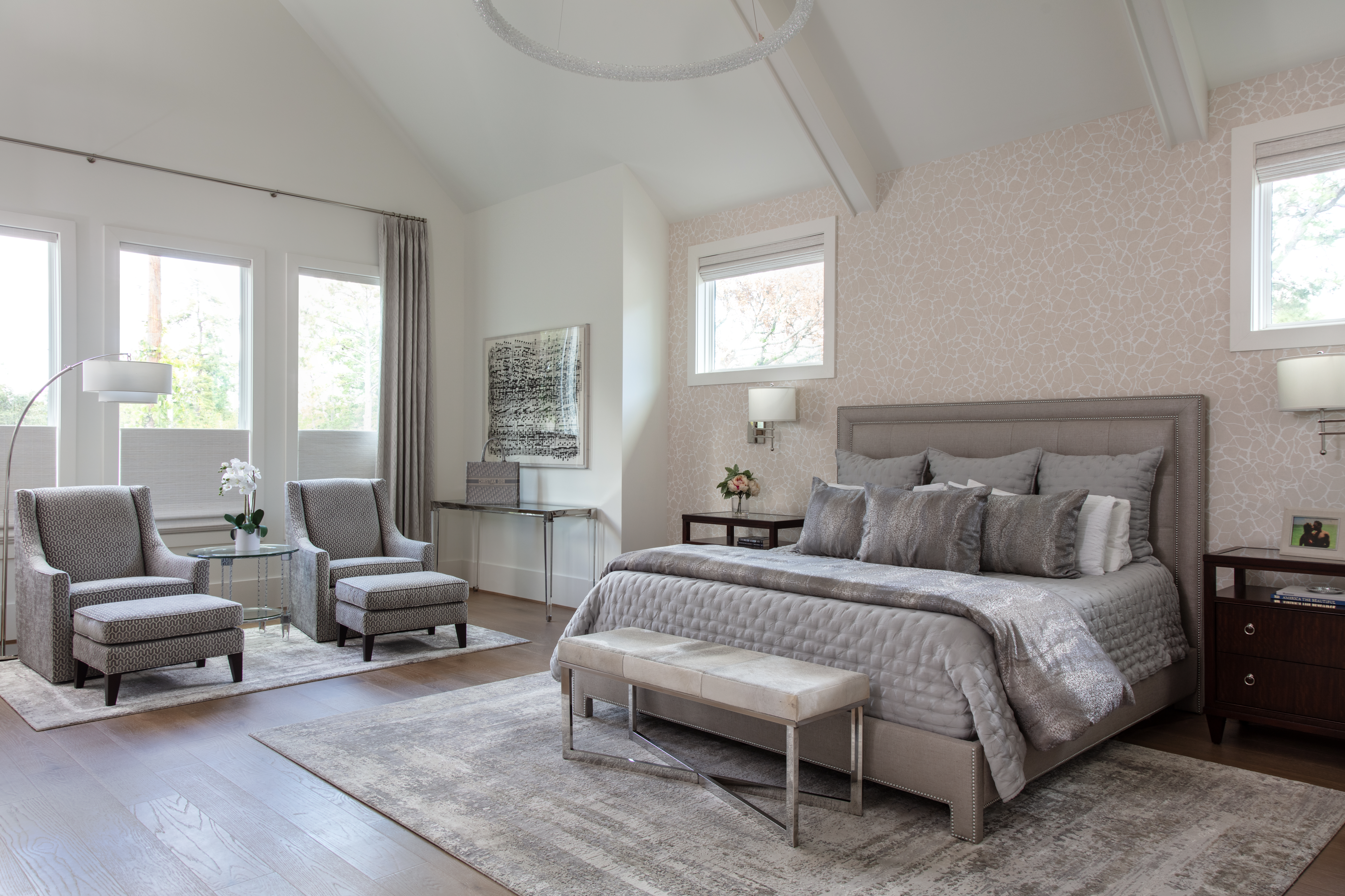
Hallways and Stairs
Hallways and stairs should be wide enough to accommodate all types of mobility aids. Even if handrails and stairlifts aren’t needed, it’s never too early to start thinking about these things in your home. Handrails should be installed on both sides of stairs and in hallways to provide support. A stair lift can provide safe and easy access to different levels of the home. However, we like to encourage our Houston interior design clients to invest in elevators, which feel more luxurious and can be a beautiful asset to the home.
Outdoor Spaces
Getting some sunshine outdoors is a great way to maintain health and wellness as we age. Outdoor spaces should also be designed with safety and accessibility in mind. Pathways should be wide and level. There’s nothing worse than an uneven sidewalk that causes trips or catches on walkers and wheelchairs. Keep the outdoor areas free of tripping hazards, with non-slip surfaces, and install good lighting. Motion sensor lighting is great for outdoor areas as well as indoors. For those who enjoy gardening, raised garden beds can be easier to manage without bending. Comfortable seating with shade is important for relaxation, and low-maintenance plants and landscaping features can reduce the need for extensive upkeep.
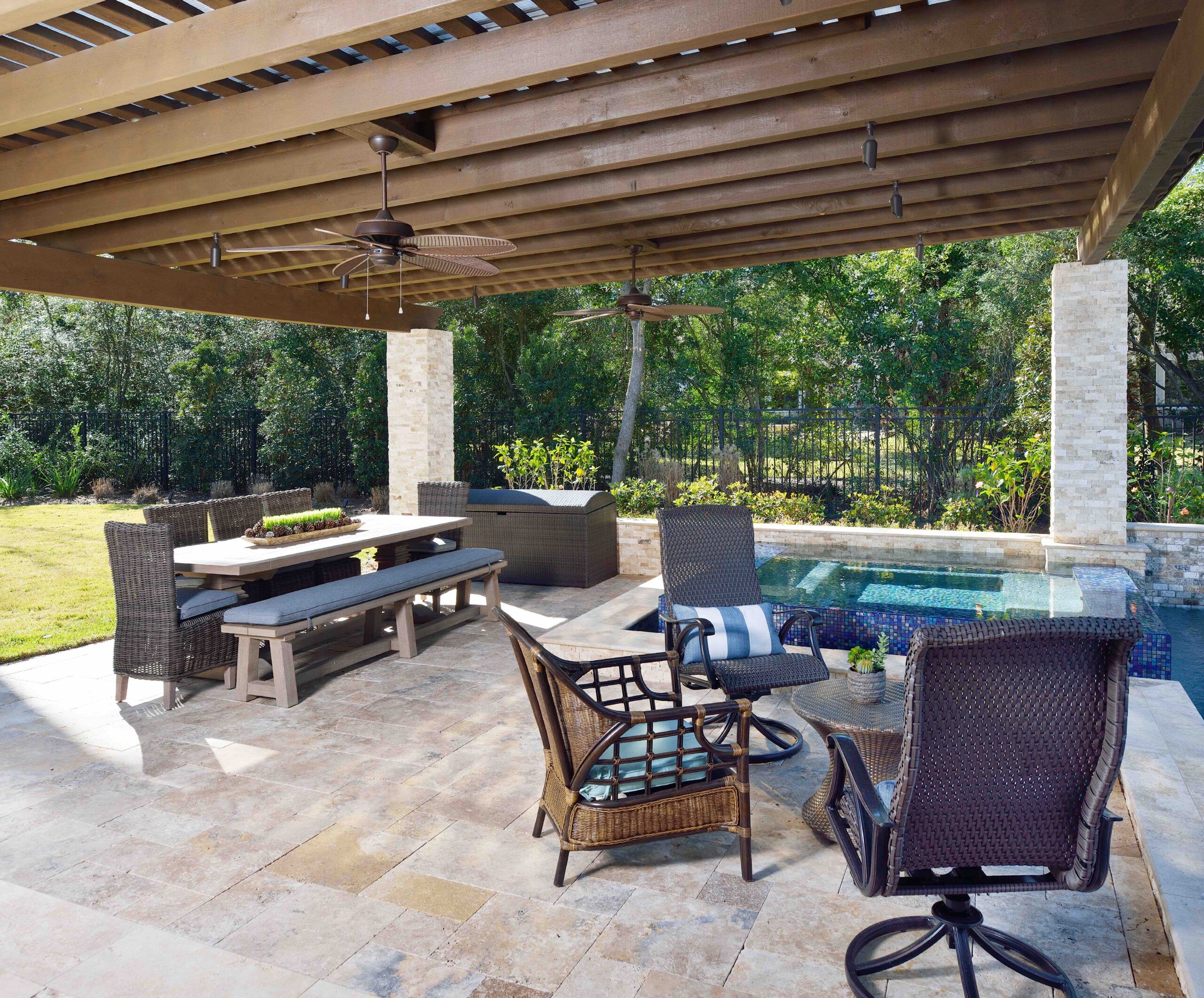
More Ways to Maximize Your Forever Home
Technology Integration for Aging in Place
It goes without saying that aging in place has been made much easier with the help of modern technology. There are now numerous solutions to enhance the safety, convenience, and independence of aging at home. Smart home systems can control lighting, temperature, security, and entertainment, making it easier for residents to manage their environment. Voice-activated assistants like Amazon’s Alexa or Google Home can help with daily tasks, such as setting reminders or playing music. Security cameras, doorbell cameras, and smart locks can enhance safety by allowing residents to see who is at the door and control access to the home. It’s pretty amazing to think about how we can gain safety, security, and accessibility nowadays through small home technology additions.
Prioritizing Areas for Socializing and Entertaining
Practical design decisions around safety and accessibility are crucial for aging in place. However, the social aspects of home life should not be overlooked. Social connectivity is essential to prevent isolation, a significant issue for older adults. Design spaces that encourage social interaction, whether it’s through a comfortable living room, a communal dining area, or outdoor seating. A well-designed home can also support mental well-being by providing security, comfort, and familiarity. Consider spaces for hobbies, entertainment, meditation, or relaxation that can help maintain cognitive health. Personalization is important, too! So we live to leave room for homeowners to personalize their space with cherished photos and mementos that create a comforting environment.
Design for Aging in Place With Expert Help
While many home modifications can be done by homeowners, others may require professional assistance. When major renovations are necessary, hiring a contractor experienced in aging-in-place design is crucial. A professional can ensure that modifications are done safely and in compliance with building codes while also offering insights into the latest technologies and materials available. Furthermore, an interior designer can help you create a forever home design that will grow with you through all of life’s phases.
Until next time, find your inspiration, or call us, and we will help you discover it.
-Pamela

MEET PAMELA, A LUXURY INTERIOR DESIGNER IN HOUSTON
Pamela O’Brien is the founder of Pamela Hope Designs in Houston, Texas. Pamela is an award-winning luxury interior designer, writer, and speaker. Prior to founding Pamela Hope Designs, Pamela served as a spokesperson in media and public affairs, working with media outlets like Dateline NBC and 48 Hours. This experience allowed her to travel the world and furthered her love for travel, culture, and interior design. After attending an executive course at the Harvard Graduate School of Design, Pamela launched her own interior design firm full-time. Pamela is known for building strong relationships with her clients, who later become friends and collaborators. She is highly influential in the Houston interior design space and shows no signs of slowing down.

